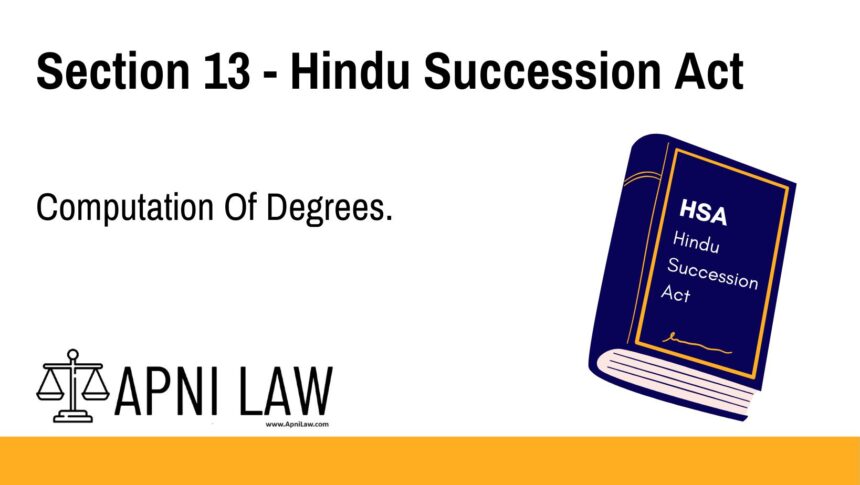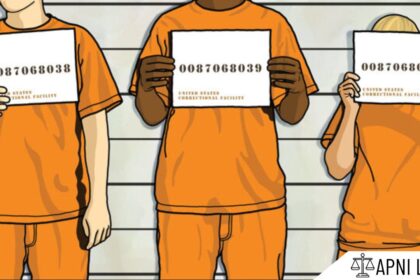Code: Section 13 Hindu Succession Act
Computation of Degrees for Succession
13.
(1) For the purposes of determining the order of succession among agnates or cognates, relationship shall be reckoned from the intestate to the heir in terms of degrees of ascent or degrees of descent or both, as the case may be.
(2) Degrees of ascent and degrees of descent shall be computed inclusive of the intestate.
(3) Every generation constitutes a degree either ascending or descending.
Explanation of Section 13 – Hindu Succession Act
Section 13 of the Hindu Succession Act provides the method for determining the relationship between an intestate (the deceased) and the heirs, particularly when it comes to agnates (related through males) and cognates (related through females). It clarifies how the degrees of relationship are calculated, which is crucial for understanding the order of succession.
Key Provisions:
- Degrees of Relationship: The relationship between the intestate and their heirs is calculated using degrees, which can be either ascending (upward from the intestate) or descending (downward from the intestate).
- Inclusion of Intestate: When calculating these degrees, the intestate (the deceased) is included in the calculation.
- Generation as Degree: Each generation, whether ascending or descending, counts as one degree. This helps in determining the exact line of succession.
Illustration
Example 1: Order of Succession
- Suppose an individual passes away without a will. If the relationship of the heir to the intestate is being determined, the degrees of relationship are counted. The individual’s child is considered in the first degree of descent. The individual’s father is considered in the first degree of ascent.
Example 2: Ascending vs Descending Degrees
- If the intestate’s grandchild is being considered for inheritance, the relationship would be in the second degree of descent, as they are one step further down from the intestate compared to their child, who would be in the first degree of descent.
Common Questions and Answers on Section 13 – Hindu Succession Act
1. What is meant by degrees of ascent and descent?
- Answer: Degrees of ascent refer to the relationship of the heirs in the upward line (e.g., the intestate’s parents or grandparents), while degrees of descent refer to the relationship in the downward line (e.g., the intestate’s children or grandchildren).
2. How are the degrees of relationship counted?
- Answer: Each generation, either ascending or descending, is counted as one degree. The intestate is included in the computation of these degrees.
3. Does Section 13 apply to both agnates and cognates?
- Answer: Yes, Section 13 applies to both agnates (relatives through males) and cognates (relatives through females) when determining the order of succession.
Conclusion
Section 13 of the Hindu Succession Act ensures clarity in determining the line of succession by systematically calculating the degrees of relationship, whether ascending or descending. This helps in establishing the rightful heirs based on their degree of relation to the intestate.








